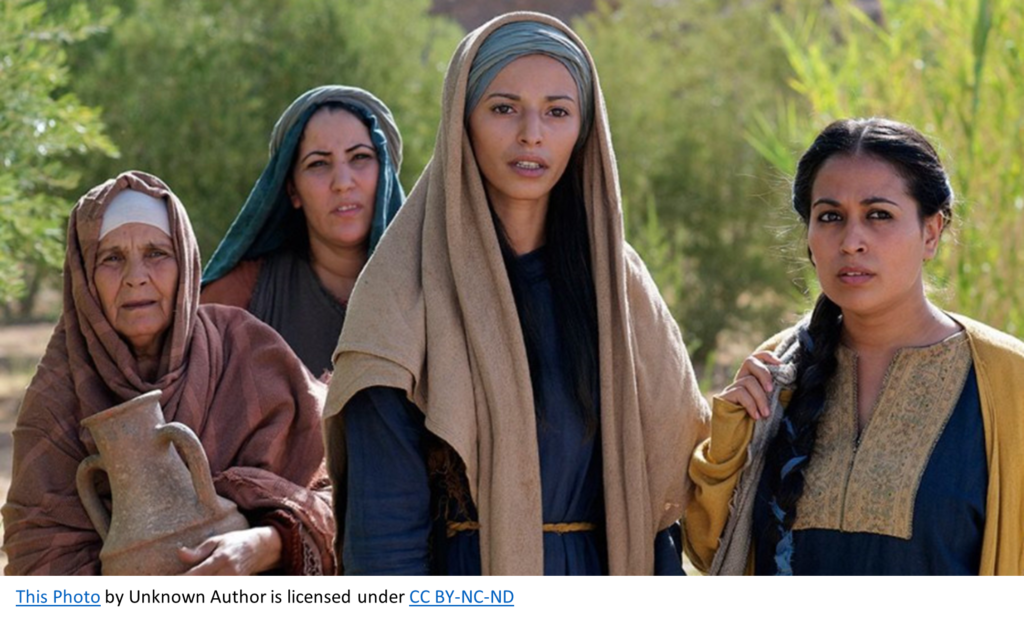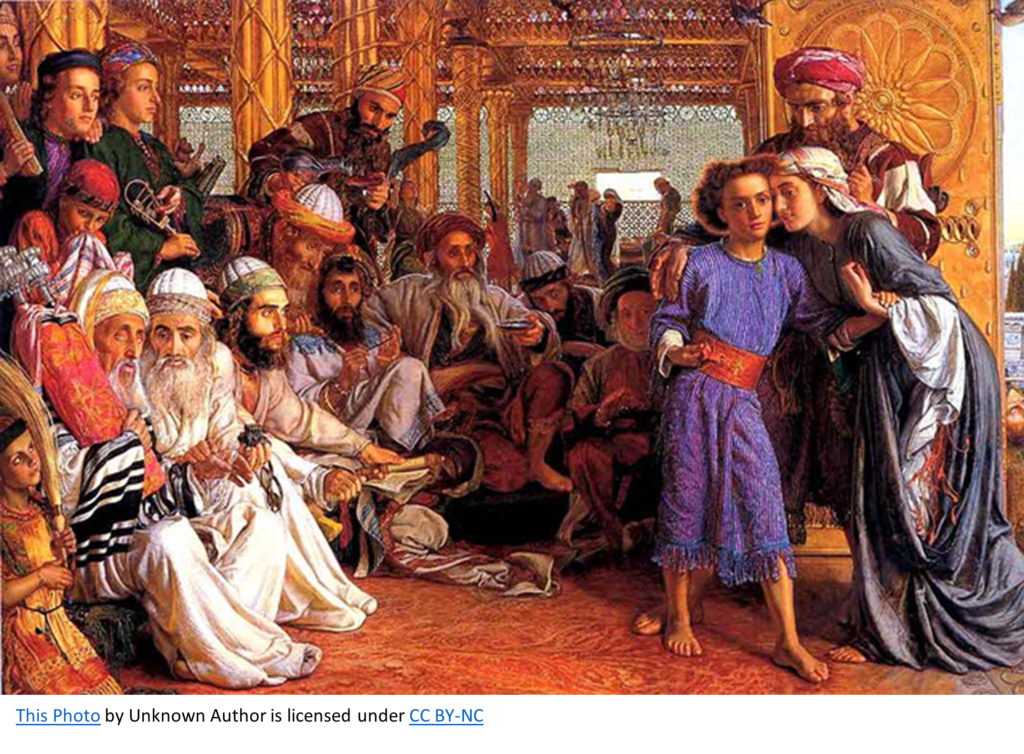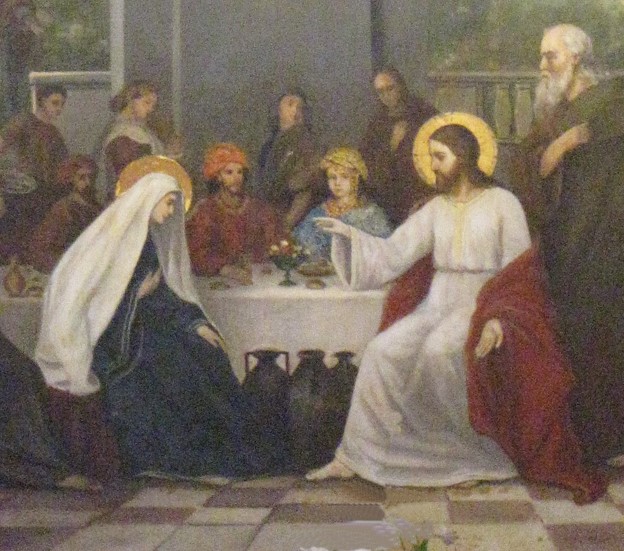How can we capture the character of real people we want to write about as real life characters? Or study a known person to use as inspiration for a character we are inventing?
We need to observe the clues in whatever evidence we can find— in the case of Mary of Nazareth, mother of Jesus, my example, this is the Bible. It’s like picking our way through an Agatha Christie novel, checking out the pointers.

So little is known about what made Mary tick that many cling to the image of her that is popular in statuary or art— bland, boring, even annoyingly pious.
I don’t believe she was like that at all.
THE ELEMENTS OF REAL LIFE CHARACTERS
The evidence for real life characters falls into three categories:
- Context – what are the character’s environment, culture and everyday concerns?
- What can we deduce from their actions?
- What can we learn from others’ opinions of them?
It’s like picking our way through an Agatha Christie novel.
LIFE SITUATION: THE CONTEXT
Mary was about thirteen when Gabriel told her she would bear the son of God—the Annunciation. She was a small-town Jewish girl, betrothed. Betrothal was a much tighter arrangement than engagement today, involving a binding contract. There were no teenage years in first century Israel: a girl transitioned into a woman with her first period.
Her main purpose in life would have been motherhood— optimally a son to continue her husband’s line. To this day, Jewish girls seek to be Mothers in Israel, perpetuating the Jewish race. In Mary’s day, a son was also an insurance policy against an impoverished widowhood. (See, for instance, Ruth 1, the plight of Naomi and Ruth without male protection. Also, Jesus’ last will on the cross in John 19:26-7, where he makes provision for his otherwise potentially destitute mother.)
As a betrothed virgin, Mary would have been under virtual household arrest, to ensure she reached her wedding day a virgin. Otherwise, the whole family would face shame. She would be chaperoned whenever she left the house to fetch water from the well or work in her father’s field.
Her other chores since childhood would include cooking, cleaning and probably some form of cottage industry or work on the family smallholding.
Having viewed the general context of our character’s life, we now consider evidence that demonstrates their personality.
ACTIONS/REACTIONS
Mary’s conversation with Gabriel demonstrates the following:
- She is perplexed and surprised by his greeting announcing her as ‘highly favored’ by God. This indicates her humility and lack of entitlement. She had no expectation of honor.
- But she had a deep belief and trust in God and a desire to serve Him.
- She was accepting of what God had for her.
Following the birth of Jesus, we gain insights into how thoughtful Mary was. We learn:
- The visit of the shepherds left her ‘pondering’.
- After Jesus, 12, was found in the Temple, he called it, ‘My Father’s house’, Mary treasured this knowledge in her heart,’ (Luke 2:51).

All this tells us quite a lot about Mary:
- She is not a blurter,
- She is someone who mulls things over.
Yet, we see that she can also be passionately expressive:
- In the story of finding Jesus, aged 12, in the Temple after a frantic, three-day search, she vents her feelings: “Son, why have you treated us like this? Your father and I have been anxiously searching for you,” (2:48).
- What feelings are we seeing here? Anguish? Anger? Relief? Perhaps a mixture. What we can say is that Mary does not hold back from expressing them. She is a complex character who is both a deep thinker and a good communicator.
Mary also demonstrates determination, confidence and courageous:
- Her Magnificat song is like a warrior manifesto.
- She is also determined at the wedding at Cana when Jesus seems reluctant to embark upon his ministry. “They have no wine,” she tells him. Despite his, “What is this to us?” she pushes him out of the nest to fledge, telling the servants to, “Do as he says.” (John 2:1-12). She is confident that Jesus will do something to fix the situation.
She is courageous:
- Mary sticks with Jesus at the cross to the horrific, bitter end. She is loving and loyal and would never abandon her son.
WHAT OTHERS SAY

An important part of our evidence for our real life characters, over and above what we see that character doing and saying, is how others relate to them.
- Joseph cares about Mary. His response to her apparent unfaithfulness is kind. Clearly, he, a righteous man, continues to respect and value her.
- Mary is also respected by her relative, Elizabeth, mother of John the Baptist, a woman of higher status than herself. Despite being her senior by several decades and the wife of a highly-regarded Temple priest, Elizabeth honors Mary.
IN SUMMARY
We have compiled a detailed profile of Mary as a real life character by examining her context, actions and reputation. We can say she was:
- Unassuming
- Trusting in God and submissive to His will,
- Thoughtful, carefully considering things before making up her mind,
- Unafraid to show her strong feelings.
- Determined
- Confident
- Courageous
- Loving and loyal
- Empathetic
- Respected by others
- Caring
- Perhaps a competent midwife
- Generous of spirit
If you carefully scrutinize the evidence available about the character you want to bring to life, you will get to know them a whole lot better, too.
I’d love to hear from you. Email me your 3-step outline for a chosen character and I will provide feedback.


God bless you richly for this, Bobbie!
Than you so much for thisenlightening piece.
Remain blessed.
Thank you, Sophia. Looking forward to seeing more of you in 2023, I hope. God bless you this Christmas.
I love your description of Mary and also of the process of creating a character. I think it’s a great idea to write a book about Mary.
Thank you, Judy. To me, she is the most misunderstood woman in history.
Thank you Bobbie
I found the break down process more than just interesting. It is inspiring. And there are several triggers here for prophetic imagination.
Loved “the Magnificat as a warrior manifesto.”
I Wonder if Mary told Jesus’ brothers and sisters who he really was.? When they were young? Did she wait till they were adults? How did she tell them? And how did they react?
Intrigued, Gaetane
Thank you for these inspirational questions, Gaetane. The brothers obviously were disappointed in Jesus as a public figure, see John 7. However, we can be reassured that by Acts 1, after Jesus’ ascension, they were back on board again.
Thank you Bobbie,
I find the framework really useful, not just in relation to Mary, but in thinking about real life characters about whom I wish to write. The challenge is to find the evidence in each of the categories, but that in itself is useful.
I found myself pondering Mary afresh after reading your suggestions. Your comments about her culture were helpful and enlightening, but present the puzzle of how she was able to travel to see Elizabeth, when pregnant, with no mention of anyone accompanying her, no witnesses to that mutual experience of revelation and recognition when they met.
Her trust in Joseph’s dream guidance to go to Egypt must also show special qualities; to agree to refugee status when she has just had the wise men’s worshipful gifts reveals more of Mary and Joseph’s deep spirituality and mutual understanding of God’s purpose
Your framework has really sharpened my plan for those I wish to write about, and underlined for me the importance of such preparation.
Thank you and Happy New year
I am glad you find this structure useful, Claire. Regarding how Mary travelled to see Elizabeth, who lived in the (beautiful) hill country just outside Jerusalem, there would constantly have been parties of itinerant farmworkers and/or traders and/or pilgrims undertaking the journey as groups, although it would not have been appropriate for Mary to join them without supervision. We meet one such group in the story of Jesus going missing during a Passover pilgrimage, aged 12.
I don’t see her and Joseph as refugees in Egypt – the idea of losing statehood is a recent one, I feel. Joseph was a carpenter. There were no passports or border control. They could go into Egypt and he could set up a carpentry service anywhere, just as Paul is a tentmaker in countries that are not his own.
Thank you Bobbie for this writer’s strategy to unfold a character.
It gives me more tools to unfold a real life Mom in India that I met there in 2006. She impacted me so much that I have carried her in my heart all these years. 2023 is the year. The LORD AAYS, Now write her story. I speak prophetically now. It will s time for her story. Bless you for your heart to encourage writers to”take the step” and write.
I look forward to hearing more about your Mom from India’s character, Connie. God bless you in your writing in 2023.